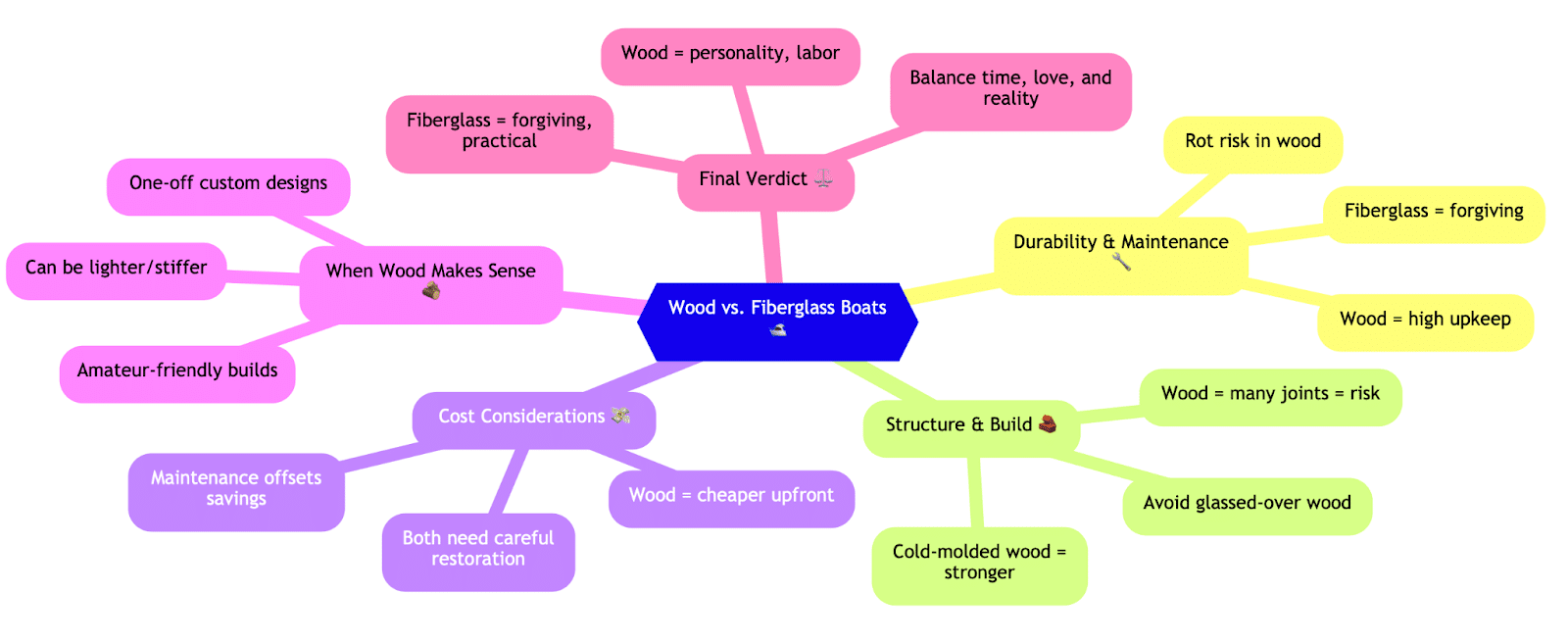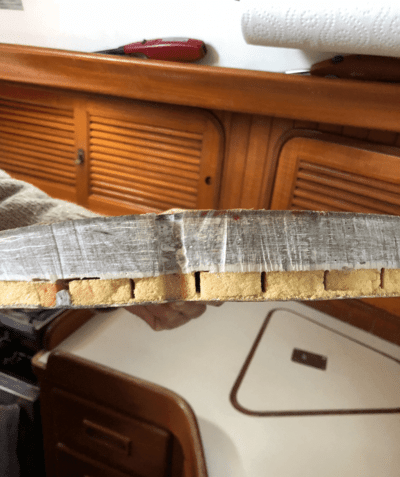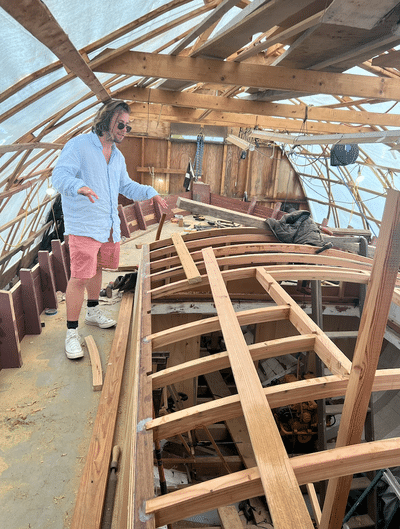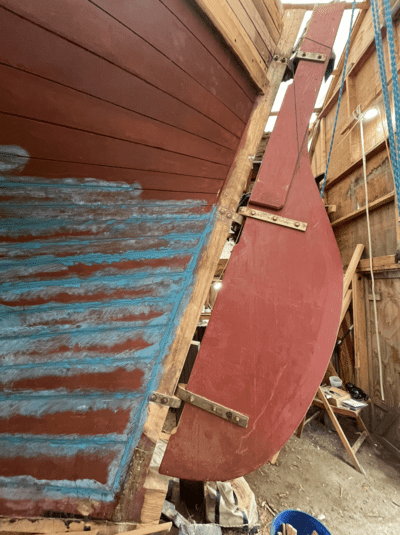Sign up with NauticEd for FREE (no obligation) and receive 2 free boating courses, a free eLogbook and boating resume, and more! If you want to get started in boating or are experienced and want to expand your knowledge and skills, consider taking our many online sailing and powerboating courses.
Wood vs. Fiberglass Boats: What You Really Need to Know
There’s no single “right” answer when it comes to choosing between a wooden boat and a fiberglass one. Each has strengths. Each has trade-offs. And no, Old Ironsides bouncing cannonballs doesn’t settle the argument. What actually matters is how they’re built, how they’ve been maintained, and how you plan to use them.
Durability & Maintenance
Fiberglass is hands-down more forgiving. You can let a fiberglass hull sit for years—maybe even a decade—and it’ll mostly be fine. Worst case? Some faded gelcoat, some grime, a few barnacles. But the structure? Still solid.
Wooden boats? Different story. Leave one unattended for a year or two, and it turns into a very expensive garden ornament. Rot sets in, fast. Especially from the top down—think deck leaks, cabin leaks, and all the sneaky ways water finds its way in. Once rot is in, you’re replacing planks, ribs, fasteners, maybe entire sections. And that’s not “maintenance”—that’s restoration. Big difference.
Maintenance-wise, a fiberglass boat usually means checking through-hulls now and then and slapping on some bottom paint once a year. Wood demands regular upkeep. Ignore it, and it punishes you.
Structure & Construction
Wooden boats are built with hundreds of joints, and every one is a potential failure point. That’s not to say they’re unsafe—plenty of them cross oceans—but the margin for neglect is razor-thin. You either keep up or pay the price.
Cold-molded wooden boats are the outlier here. These use layers of wood with epoxy and are basically built like fiberglass hulls, just with a different stiffener. In some cases, they’ve got better impact resistance than fiberglass. But don’t confuse these with traditional plank-on-frame hulls or wooden boats that someone tried to “help” by glassing over—usually a bad idea.
Cost Considerations
The one big advantage wooden boats still have? Purchase price. You can often pick one up for a fraction of the cost of a fiberglass boat. But here’s the kicker: you’ll probably pay that difference—and then some—on the back end in maintenance and repairs.
Restoring a beat-up fiberglass boat can still cost you plenty, so buying cheap and fixing it up is rarely a good financial move in either case unless you really know what you’re doing (and enjoy doing it).
When Wood Makes Sense
There are some good reasons to build or own a wooden boat:
- One-off designs: If you’re building a single custom hull, wood avoids the need for expensive fiberglass molds.
- Amateur builds: Stitch-and-glue or plywood-on-frame construction can be done with basic tools and patience.
- Weight-sensitive builds: Wood can be lighter than traditional fiberglass (though not foam/carbon), and stiffer at a lower cost.
But for most owners, unless you’re really into boat work, fiberglass is just more practical.
Final Word
Wooden boats are like dogs: beautiful, full of personality, and fun to be around—but they demand time, attention, and love. Fiberglass is the low-maintenance houseplant by comparison. It’s not zero-maintenance, but it’s forgiving in a way that wood just isn’t.
And when you’re trying to balance boat time with family, work, or—let’s be honest—just actually sailing, “forgiving” goes a long way. So unless you’re all-in on the craftsmanship, the aesthetic, and the upkeep, fiberglass is probably the smarter move.
You can learn more with NauticEd

Sign up with NauticEd for FREE (no obligation) and receive 2 free boating courses, a free eLogbook and boating resume, and more! If you want to get started in boating or are experienced and want to expand your knowledge and skills, consider taking our many online sailing and powerboating courses.









